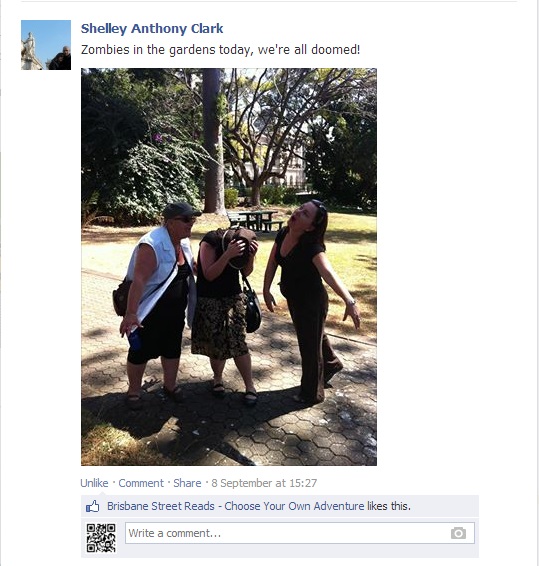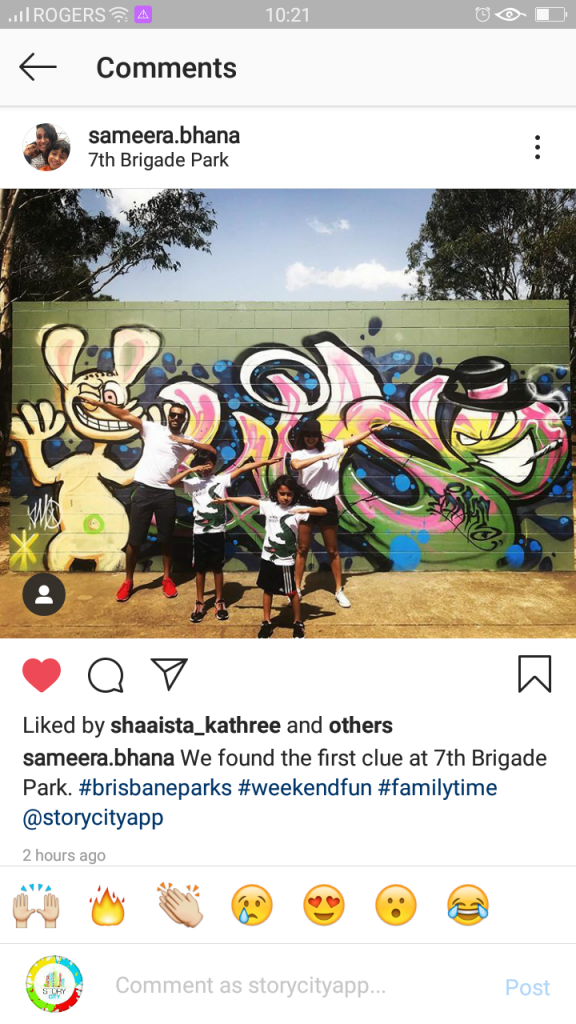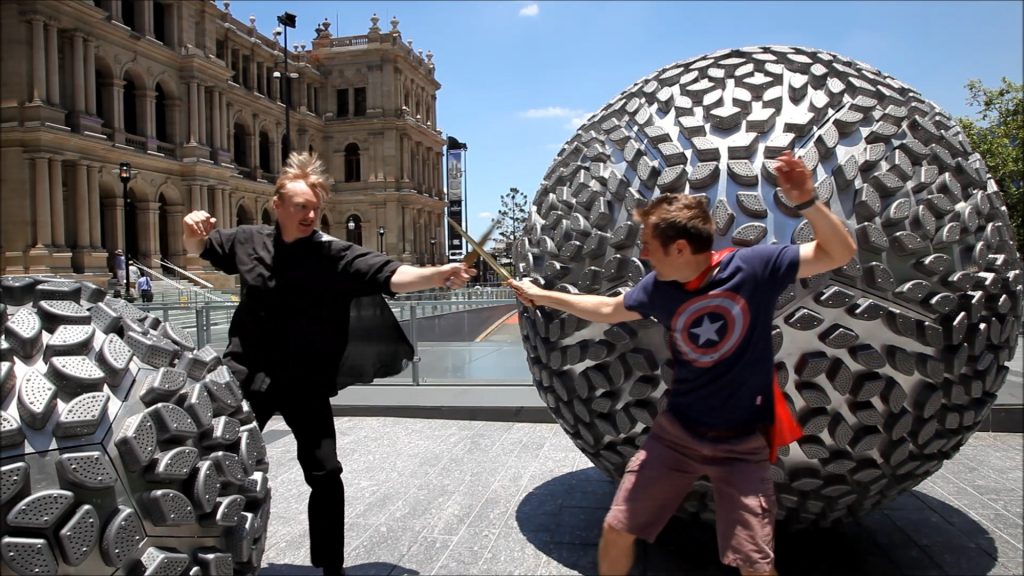If your retail business has a brick-and-mortar location, you’re always looking for innovative solutions to attract more foot traffic. COVID has made that task even more difficult, as businesses and chambers of commerce try to balance attracting new customers with following safety precautions.
Savvy business owners are turning to digital activities as a creative way to bring more customers through the door and foster repeat business in a COVID safe way. Digital activities offer an interactive, on-demand way to harness the power of place, making your city or neighborhood a memorable, interesting destination.
At Story City, we’ve researched and tested multiple digital activities to aid small businesses and business associations in getting noticed for all the right reasons! Below, you’ll find the four most popular, along with tips for making each activity truly awesome.
1. Scavenger hunt
Time To Create: ~2-4 weeks
How long will it draw a crowd: 6-12 months
Digital scavenger hunts are a simple, effective way to involve people in a shared “challenge” experience because they don’t require any physical installations or passports that have to be printed and maintained. Each scavenger hunt clue leads visitors to a new location, where they collect a prize or other incentive. This is a straightforward way to gamify storefronts, so it’s easy to include many local businesses.
- Include non-retail locations: The most successful scavenger hunts make visitors feel like they’re really getting to know the neighborhood. Strive to include the hidden gems of your community, such as murals, historical markers, or other points of interest. Remember giving them a task in each location is key, a challenge, or a collection or creation of some kind that makes it interactive and playful.
- Offer incentives to come back: Encourage each business to offer not only a prize, but also a special offer that’s good for a subsequent visit. This helps drive repeat customers.
- Weave in local culture or history: Scavenger hunt clues are a great place to incorporate tidbits about the community, and provide partnership opportunities with your local community leagues and government offices. You can also play with the names of streets and other geographical landmarks.
- Keep it short and sweet: If the scavenger hunt is too long, people will drop off. This means less foot traffic for the businesses at the end of the route. For a family-friendly scavenger hunt, plan on having no more than about 10 stops or clues.
2. Walking tour
Time to Create: ~1 month
How long will it draw a crowd: 2+ years
Walking tours have long been a staple for visitors who want to explore a new area, with a digital walking tour you can take a once a day event and turn it into a 24/7 experience for your business and neighbourhood that you can run for months or years! They have also recently surged in popularity, a trend that mirrors our growing obsession with taking food tours; buying handmade and local; and supporting social impact.
A digital walking tour might include a short video documentary (say, 3-5 minutes) of each business in addition to interesting tid-bits about the culture, history, and people of the neighbourhood. These videos are an ideal platform to tell the story of your business and showcase how you create what you sell, increasing the perceived value of your products.
- Choose a theme: Walking tours with specific themes are easier to create, and they tend to bring a self-selecting audience of people who are interested in that theme. A restaurant walking tour, for instance, might focus on killer appetizers or quick bites.
- Tell a compelling story: Visitors who know the story behind a business are more likely to make a purchase (whether it’s your origin story, or a demo from one of your vendors or staff members of something you sell). They’re also more likely to remember and recommend the business later.
- Optimise the effort: Putting together a walking tour isn’t easy! Get the most out of the endeavor by reusing the materials you create for social media and promotional campaigns. Reusing content in these different ways reduce the work for you, and make sure you are getting the best bang for your buck if you are working with a local content creator or storyteller to tell your stories.
3. Amazing Race/Puzzle trail
Time to Create: ~2-3 months
How long will it draw a crowd: 6-12 months
A reality television show, “The Amazing Race” pits two teams against each other in a race around the world. At each location, the team must complete a challenge to discover their next destination. It’s essentially a global puzzle trail. This concept can easily be applied to a city or neighborhood.
While a digital “Amazing Race”-style puzzle trail might involve fewer businesses, it’s a much more interactive experience. Solving puzzles actually gets much higher engagement, interest, and participation than scavenger-hunt “collecting.”
- Foster human connections: Interaction drives a sense of connection, so use the puzzle trail as an opportunity for interaction between participants and shop staff. This could be as simple as an employee providing a secret code phrase to participants.
- Make activities relevant: The more the puzzle relates to the location, the more memorable it will be. Try to create activities that focus on the product or story of each business or the interesting locations around the businesses.
- Know your audience: Be sure that participants can actually solve each puzzle! This is particularly important if participants will include families with younger children. When possible, test out your puzzles with members of your intended age group. Or, if you want to put up a very lucrative prize, maybe partnering with local creators or puzzle room businesses to make puzzles as super hard a possible to get word of mouth spread and a strong initial launch is your strategy!
- Prepare employees for “puzzlers”: This kind of digital experience is available on demand, so staff will need to be consistently ready. Their preparation is key to giving participants a great experience and making them want to come back later. Remember, with a digital Puzzle trail you can run this activity for 6-12months on a platform like Story City which allows users to discover your activity every day. So maybe make a cheat sheet tapped behind your counter so your staff always know what’s needed to keep this experience going long past the launch.
4. Choose Your Adventure
Time to Create: ~4-6 months
How long will it draw a crowd: 3+ years
Both immersive and reusable, a choose-your-adventure story allows participants to make choices as they progress through a story, allowing one group of players to go a different way through a city or area to someone else. The activity can be different each time, encouraging participants to do it multiple times to see what happens if they make a different choice. The choose-your-adventure story is particularly appealing to locals, and the different endings encourage word-of-mouth discussion.
In our past testing, almost 30% of participants completed the experience multiple times, to discover all the possible endings. This is the highest participation rate for any experience type. For businesses, this translates into repeat visitation and interaction with businesses.
- Partner with a local storyteller: Place matters, but so does a very good story. A storyteller who is intimately familiar with your neighborhood or community will be uniquely positioned to create an experience that’s both entertaining and relevant to your location. We’ve found that fictional adventures, where the participant can step into the shoes of a character as they make their choices, drive 70% higher participation rates and allow you to hide in little bits of history or information about businesses that are more readily absorbed than in non-fiction, walking tour style versions.
- Make plenty of branches: Each choice, or branch, in your story adds complexity. More branches mean that participants have more choices, encouraging greater repetition to explore all their different options.
- Vary the endings: In real life, not all endings are happy. Come up with endings that are “win,” lose,” and “no outcome.” Concerned that people will be disappointed by a bad ending? These participants are often likely to repeat the activity to achieve a more satisfying outcome meaning they come past more businesses and attraction points in your neighbourhood.
Ready to unlock the power of place for your city? We’re happy to guide you through the process.
If you’re a business, business association, chamber of commerce, or economic development organisation, contact Story City to see how we can help you connect to your community and customers in an interactive and entertaining way that promotes foot traffic and spending. Just email: ecraven (at) storycity (dot) com (dot) au







